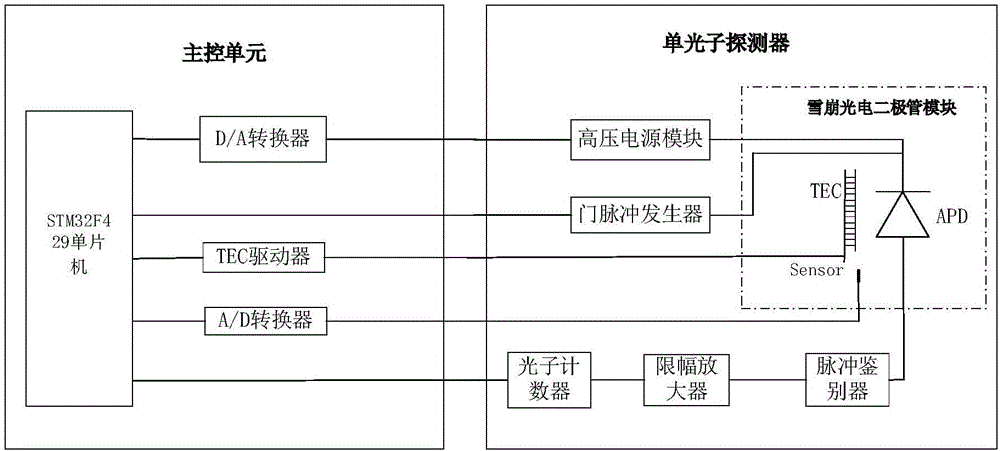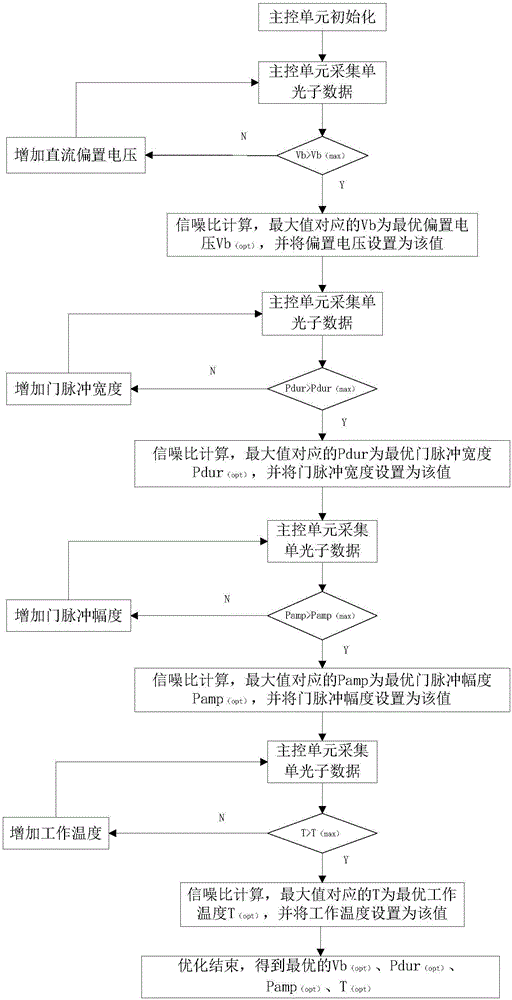Optimal setting method for parameters of single-photon detector
A single-photon detector and parameter technology, applied in the field of photoelectric detection, can solve the problems of low gate pulse repetition frequency, limited application, long measurement time, etc., and achieve the effect of solving long test time, reducing post-pulse probability, and shortening dead time
- Summary
- Abstract
- Description
- Claims
- Application Information
AI Technical Summary
Problems solved by technology
Method used
Image
Examples
Embodiment Construction
[0030] The preferred embodiments of the present invention will be described in detail below in conjunction with the accompanying drawings.
[0031] Such as figure 1 As shown, the single photon detector of the present embodiment includes: comprising an avalanche photodiode module, a high-voltage power supply module, a gate pulse generator, a time-correlated counter (ie, a photon counter), a limiting amplifier, a pulse discriminator, an avalanche photodiode The module is equipped with a thermoelectric cooler (TEC), a temperature sensor (sensor), and an avalanche photodiode (APD).
[0032] The photon detection unit also needs to be equipped with a corresponding main control unit, which can be externally connected or directly built in as a part of the single photon detector. The main control unit is implemented based on a microprocessor, including single-chip microcomputer, DSP, FPGA and other chip processing.
[0033] In this embodiment, the main control unit is realized based ...
PUM
 Login to View More
Login to View More Abstract
Description
Claims
Application Information
 Login to View More
Login to View More - R&D
- Intellectual Property
- Life Sciences
- Materials
- Tech Scout
- Unparalleled Data Quality
- Higher Quality Content
- 60% Fewer Hallucinations
Browse by: Latest US Patents, China's latest patents, Technical Efficacy Thesaurus, Application Domain, Technology Topic, Popular Technical Reports.
© 2025 PatSnap. All rights reserved.Legal|Privacy policy|Modern Slavery Act Transparency Statement|Sitemap|About US| Contact US: help@patsnap.com



